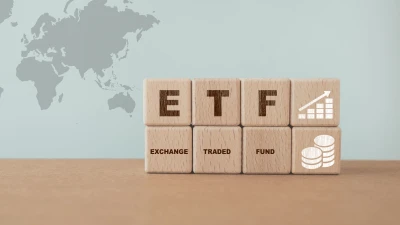Advisers neglecting active ETFs as launches fail to see momentum



While ETFs are growing in popularity with advisers, there is a growing divide in demand between those which are index and active, according to VanEck.
The exchange-traded product (ETP) industry reached $215 billion in July and is forecast to reach $230 billion by the end of the year.
But a growing divide is emerging between the demand for those which are index-tracking products and those which are active ETFs.
During 2023, active ETFs reported $1 billion in outflows, although this was primarily driven by outflows from Magellan Global Fund (Open Class) (Managed Fund) which lost $2.5 billion.
Some 18 active ETFs have been launched since the start of the year but have only seen $36 million in net flows, representing just 0.3 per cent of total ETF flows. Out of the total 119 active ETFs available in the Australian marketplace, 64 have less than $50 million.
The attraction of launching an active ETF is for asset managers to broaden their investor reach with more investors, such as those in self-managed super funds (SMSFs) able to easily access the funds in an ETF format.
Active ETFs launched this year include a range of four active ETFs from Fidelity, an active bond ETF from Franklin Templeton, and two systematic active ETFs from Macquarie.
Arian Neiron, chief executive and managing director for Asia Pacific at VanEck, said: “While index-tracking ETFs are seeing unbated growth from new investors and existing investors increasing their allocations, it is a different story for the active ETFs listed by fund managers.
“There are 119 active ETFs listed in Australia, out of 386 total ETPs. However, despite making up 30 per cent of the industry in terms of numbers, active ETFs only hold 21 per cent in terms of funds under management (FUM). There have also been an increasing number of active ETF closures.”
Neiron said the lack of strong flows into active vehicles demonstrated that product providers shouldn’t just replicate existing unlisted funds and should be a new, attractive offering for advisers.
“Not all ETFs are alike and Australian investors are not convinced at the proposition.
“It is understandable that many active fund managers have seen the growth in the ETP industry and think that simply participating will result in flows rather than assessing the sustainability of their strategies in light of persistency of performance, lack of transparency and higher fees.”
If demand did not increase, he said, this could lead to a higher number of fund closures rather than launches.
“There is a growing likelihood of potential delistings as many active ETFs remain at unviable FUM from lack of flows.”
Recommended for you
VanEck is expanding its fixed income range with a new ETF this week to complement its existing subordinated debt strategy which has received $1 billion in inflows this year.
Specialist global equities manager Nanuk has celebrated 10 years of its flagship New World Fund and is actively considering its next possible vehicle.
Australian equities manager Datt Capital has built a retail-friendly version of its small-cap strategy for advisers, previously only available for wholesale investors.
The dominance of passive funds is having a knock-on effect on Australia’s M&A environment by creating a less responsive shareholder base, according to law firm Minter Ellison.












